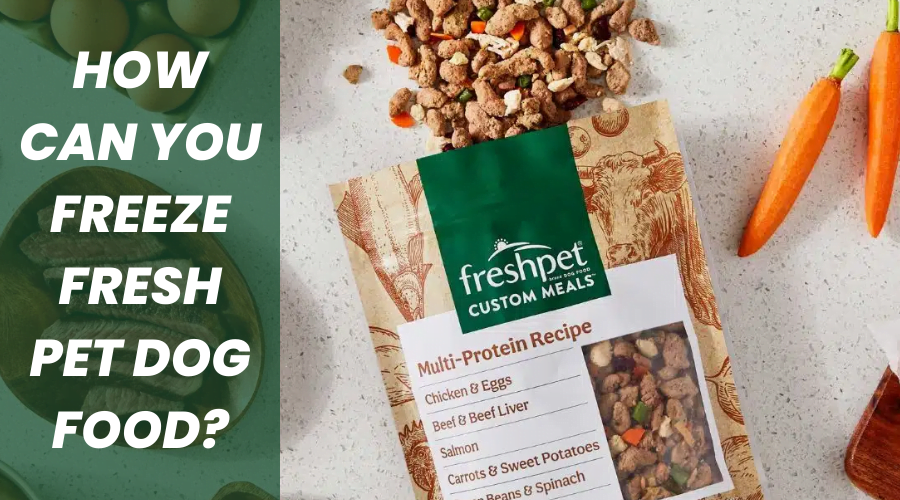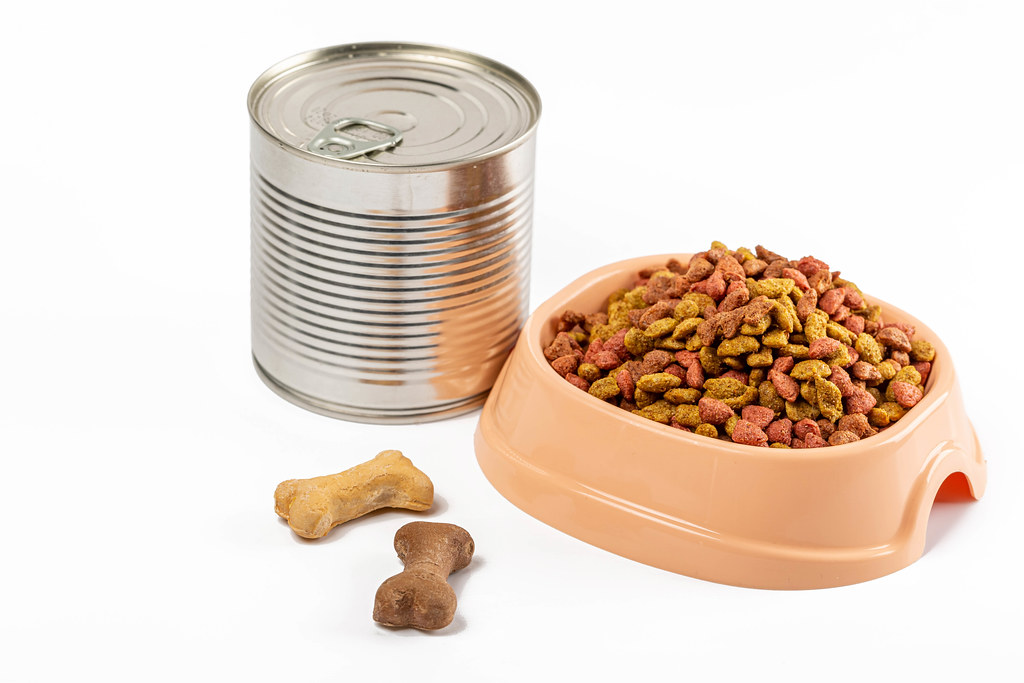
Introduction to Freezing Fresh Pet Dog Food
Fresh pet dog food refers to homemade meals that are prepared using fresh, natural ingredients specifically for dogs. These meals are typically made with high-quality proteins, vegetables, and grains, and are free from artificial additives and preservatives. Freezing fresh pet dog food is a popular method of preserving these homemade meals, ensuring that they remain fresh and nutritious for longer periods of time.
How can you freeze fresh pet dog food is important for several reasons. Firstly, it helps to extend the shelf life of the food, allowing pet owners to prepare larger batches of meals and store them for future use. This can be especially beneficial for busy pet owners who may not have the time to prepare fresh meals for their dogs every day. Additionally, freezing fresh pet dog food can help to preserve the nutritional value of the ingredients, ensuring that dogs receive all the essential nutrients they need for optimal health.
Benefits of Freezing Fresh Pet Dog Food
1. Longer Shelf Life: One of the main benefits of freezing fresh pet dog food is that it extends its shelf life. By freezing the food, you can preserve it for several weeks or even months, allowing you to prepare larger batches and save time in the long run. This is particularly useful for pet owners who have busy schedules or travel frequently and may not always have the time to prepare fresh meals for their dogs.
2. Convenience: Freezing fresh pet dog food also offers convenience. By having pre-portioned meals stored in the freezer, you can easily grab a meal and thaw it when needed. This eliminates the need for daily meal preparation and ensures that your dog always has a nutritious meal ready to eat.
3. Cost-Effective: Another benefit of freezing fresh pet dog food is that it can be cost-effective. By buying ingredients in bulk and preparing larger batches of meals, you can save money in the long run. Additionally, freezing fresh pet dog food can help to reduce waste, as you can portion out the meals according to your dog’s needs and avoid throwing away unused food.
4. Nutritional Value Preservation: Freezing fresh pet dog food helps to preserve the nutritional value of the ingredients. When food is frozen, the growth of bacteria and other microorganisms is slowed down, which helps to maintain the freshness and quality of the ingredients. This ensures that your dog receives all the essential nutrients they need for optimal health.
Choosing the Right Containers for Freezing Fresh Pet Dog Food
When it comes to how can you freeze fresh pet dog food, choosing the right containers is crucial. Here are some factors to consider:
1. Types of Containers: There are several types of containers that can be used for freezing fresh pet dog food. Some popular options include plastic containers, glass containers, and freezer bags. Plastic containers are durable and easy to stack, while glass containers are non-toxic and can be reheated in the microwave or oven. Freezer bags are a convenient option for portioning out meals and can be easily stored in the freezer.
2. Material Considerations: When choosing containers for freezing fresh pet dog food, it’s important to consider the material. Make sure that the containers are made from food-grade materials that are safe for storing food. Avoid containers that contain harmful chemicals such as BPA (bisphenol A), as these can leach into the food and pose a health risk to your dog.
3. Size and Shape Considerations: The size and shape of the containers will depend on your dog’s portion size and your storage space. It’s important to choose containers that are the right size for your dog’s meals, as this will help to prevent waste and ensure that each meal is properly portioned. Additionally, consider the shape of the containers and how they will fit in your freezer. Stackable containers or freezer bags can help to maximize storage space.

Preparing Fresh Pet Dog Food for Freezing
Before freezing fresh pet dog food, it’s important to properly prepare the meals. Here are some steps to follow:
1. Ingredients Selection: Start by selecting high-quality ingredients for your dog’s meals. Choose lean proteins such as chicken, turkey, or beef, and include a variety of vegetables and grains for added nutrition. Avoid using ingredients that are toxic to dogs, such as onions, garlic, and chocolate.
2. Cooking Methods: Cook the ingredients thoroughly to ensure that they are safe for consumption. You can boil, bake, or steam the proteins and vegetables, depending on your dog’s preferences and dietary needs. Avoid using excessive amounts of oil or seasoning, as this can be harmful to dogs.
3. Cooling Down the Food: After cooking the meals, allow them to cool down completely before freezing. This helps to prevent the growth of bacteria and ensures that the food freezes evenly. Divide the meals into individual portions or use the portioning methods discussed in the next section.
Portioning Fresh Pet Dog Food for Freezing
Proper portioning is important when freezing fresh pet dog food. Here are some reasons why it’s important and methods to consider:
1. Importance of Portioning: Portioning fresh pet dog food before freezing helps to ensure that each meal is properly sized for your dog’s needs. This can help to prevent overfeeding or underfeeding and maintain a healthy weight for your dog. Additionally, portioning makes it easier to thaw and serve the meals, as you can simply take out the desired portion without having to thaw the entire batch.
2. Portioning Methods: There are several methods you can use to portion fresh pet dog food for freezing. One option is to use individual containers or freezer bags and divide the meals into single servings. Another option is to use ice cube trays or silicone molds to freeze smaller portions, which can be easily thawed and served as needed. You can also use a kitchen scale to weigh out the portions and store them in larger containers.
3. Portion Size Considerations: The portion size will depend on your dog’s size, age, and activity level. It’s important to consult with your veterinarian to determine the appropriate portion size for your dog. As a general guideline, adult dogs typically require 2-3% of their body weight in food per day, while puppies may require more. Divide the total daily portion into individual servings and freeze them accordingly.
Labeling and Storing Fresh Pet Dog Food in the Freezer
Proper labeling and storage are essential when freezing fresh pet dog food. Here are some tips on how can you freeze fresh pet dog food:
1. Labeling Requirements: Label each container or freezer bag with the date of preparation and the contents of the meal. This will help you keep track of the freshness of the food and ensure that you use the oldest meals first. You can also include any special instructions or dietary information on the labels.
2. Storage Considerations: Store the labeled containers or freezer bags in the freezer at a temperature of 0°F (-18°C) or below. Make sure that the freezer is clean and free from odors that can transfer to the food. Avoid overcrowding the freezer, as this can affect the freezing process and lead to uneven freezing.
3. Freezer Organization Tips: To maximize storage space and keep your freezer organized, consider using stackable containers or freezer bags that can be easily stacked or arranged in rows. You can also use dividers or bins to separate different types of meals or ingredients. Keep a record of the meals stored in the freezer and their expiration dates to ensure that you use them before they expire.
Thawing Fresh Pet Dog Food Safely
Thawing fresh pet dog food safely is important to prevent the growth of bacteria and ensure that the meals remain safe for consumption. Here are some methods and safety precautions to follow:
1. Thawing Methods: There are several methods you can use to thaw fresh pet dog food. One option is to transfer the frozen meal from the freezer to the refrigerator and allow it to thaw overnight. This slow thawing method helps to maintain the quality of the food. Alternatively, you can thaw the meal in a microwave using the defrost setting, or place it in a sealed bag and submerge it in cold water.
2. Safety Precautions: When thawing fresh pet dog food, it’s important to follow safety precautions to prevent the growth of bacteria. Avoid thawing the food at room temperature, as this can lead to bacterial growth. Additionally, make sure that the thawed food is consumed within 2-3 days to prevent spoilage. Discard any leftover food that has been left out at room temperature for more than 2 hours.
3. Time Considerations: The time it takes to thaw fresh pet dog food will depend on the size and thickness of the meal. Larger portions may take longer to thaw compared to smaller portions. It’s important to plan ahead and allow enough time for the meals to thaw properly. If you’re in a hurry, you can use the microwave or cold water thawing methods, but make sure to monitor the process closely to prevent overheating or bacterial growth.
How Long Can Fresh Pet Dog Food Be Frozen?
The shelf life of frozen fresh pet dog food can vary depending on several factors. Here’s what you need to know:
1. Shelf Life of Frozen Fresh Pet Dog Food: When stored properly at a temperature of 0°F (-18°C) or below, frozen fresh pet dog food can typically be stored for up to 3-6 months. However, it’s important to note that the quality and nutritional value of the food may start to decline after this time. It’s recommended to use frozen meals within 3 months for optimal freshness and nutrition.
2. Factors Affecting Shelf Life: Several factors can affect the shelf life of frozen fresh pet dog food. These include the quality of the ingredients, the cooking and freezing methods used, and the storage conditions. It’s important to use high-quality ingredients and follow proper cooking and freezing techniques to ensure that the food remains safe and nutritious for longer periods of time.
Tips for Maintaining Nutritional Value When Freezing Fresh Pet Dog Food
Preserving the nutritional value of fresh pet dog food is important to ensure that your dog receives all the essential nutrients they need. Here are some tips to help maintain the nutritional value when freezing fresh pet dog food:
1. Nutritional Value Preservation Techniques: To preserve the nutritional value of fresh pet dog food, it’s important to cook the ingredients properly and avoid overcooking. Overcooking can lead to nutrient loss. Additionally, avoid using excessive amounts of oil or seasoning, as this can add unnecessary calories and sodium to the meals.
2. Ingredient Selection Tips: Choose high-quality ingredients that are rich in essential nutrients. Include a variety of proteins, vegetables, and grains to ensure a balanced diet for your dog. Consider adding supplements such as fish oil or probiotics to enhance the nutritional value of the meals.
3. Cooking and Freezing Methods: Cook the ingredients using methods that help to retain their nutritional value, such as steaming or baking. Avoid boiling or frying, as these methods can lead to nutrient loss. When freezing the meals, make sure to cool them down properly before placing them in the freezer to maintain their freshness and quality.
FAQs about Freezing Fresh Pet Dog Food
1. Can I freeze raw pet dog food?
Yes, you can freeze raw pet dog food. Raw food diets, also known as BARF (Biologically Appropriate Raw Food) diets, are becoming increasingly popular among pet owners. Raw pet dog food can be frozen in the same way as cooked meals, using proper portioning and storage techniques.
2. Can I freeze homemade dog treats?
Yes, you can freeze homemade dog treats. Freezing homemade dog treats can help extend their shelf life and ensure that they remain fresh and tasty for longer periods of time. Make sure to use proper containers and label them accordingly.
3. Can I freeze commercial pet dog food?
Most commercial pet dog food is already frozen or freeze-dried to preserve its freshness and nutritional value. However, if you have opened a can or bag of commercial pet dog food and have leftovers, you can freeze them in proper containers for future use. Make sure to follow the same freezing and thawing methods discussed earlier.
Alternatives to Freezing Fresh Pet Dog Food
While freezing fresh pet dog food is a popular method of preservation, there are alternative storage methods and commercial options available:
1. Other Storage Methods: If freezing fresh pet dog food is not an option for you, there are other storage methods you can consider. Refrigeration can be used to store fresh pet dog food for a shorter period of time, typically up to 3-5 days. Dehydrating or freeze-drying the food can also help to extend its shelf life and preserve its nutritional value.
2. Commercial Options: If you prefer not to prepare homemade meals for your dog or don’t have the time to do so, there are several commercial options available. Many pet food companies offer frozen or freeze-dried meals that are specifically formulated for dogs. These meals are often balanced and complete, providing all the essential nutrients your dog needs for optimal health.
Conclusion and Final Thoughts on Freezing Fresh Pet Dog Food
Freezing fresh pet dog food is a convenient and cost-effective way to preserve homemade meals for your furry friend. It helps to extend the shelf life of the food, maintain its nutritional value, and provide a convenient solution for busy pet owners. By choosing the right containers, properly portioning the meals, and following proper freezing and thawing methods, you can ensure that your dog always has a fresh and nutritious meal ready to eat. Remember to consult with your veterinarian for specific dietary recommendations and enjoy the benefits of freezing fresh pet dog food for your beloved companion.
